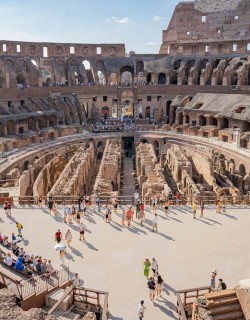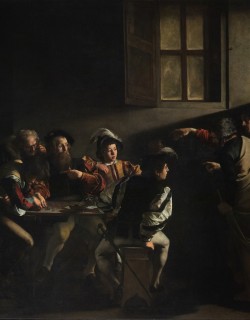Jonah welcomes us. It is Jonah and the whale who suddenly come to greet us, the moment we enter the chapel. But why did Michelangelo choose Jonah? The answer lies in his story.
These are the stories of the sibyls, the prophets, the ancestors of Christ. These are the stories that enthralled Michelangelo. In our Sistine Chapel tour, you’ll discover how Michelangelo brings these characters to life, through gestures and expressions, filling the ceiling of the Sistine Chapel with three-dimensional figures. Exploring the extraordinary art collections of the Vatican Museums with our engaging guide, you’ll discover the world where he grew up, his cultural background and the atmosphere of the time.
Let’s go back to Jonah, a humble dove-seller from the Old Testament. Jonah calls out to passers-by: “Doves, doves!” The birds are bought by the poor, to be sacrificed at the temple. From this point on Jonah’s name means “dove” in Hebrew. But God has other plans for him. One day He calls Jonah, startling the animals, and asks him to go to the city of Nineveh to prophesy against sin. Jonah does not listen; he flees, boarding a boat travelling in the opposite direction.
All of a sudden, the boat is hit by a terrible storm, and the crew are on the verge of death. Jonah confesses his mistake - God is angry with him. The sailors have no choice but to leave him to the mercy of the storm.
But God does not abandon him. A whale emerges from the waves and swallows him whole, saving him from the chaos of the sea. In the belly of the whale, Jonah repents. God listens to his prayers and opens the mouth of the whale. Jonah is saved and goes straight to Nineveh to preach against sin, prophesying the destruction of the city within forty days, by the will of God.
Unexpectedly, the citizens of Nineveh listen to him and recognise their sins. They fast and repent. God decides not to destroy Nineveh. But Jonah doesn’t understand how God can make him proclaim something and then have a change of mind. Distraught, he asks God for death.
Jonah leaves the city and waits. A gourd grows beside him in the shade. This is God’s will, and it gives Jonah comfort. But there’s disappointment at dawn - the gourd wilts. “Why?” asks Jonah.
God responds with disarming humility: “If you are moved by a gourd, how could I not be moved by Nineveh and its inhabitants, including thousands of innocents?”
Michelangelo is a rebel. The men of the Renaissance rebel against the old world that they inherited, to build one best suited to their new way of thinking and living in the world.
Our world is their world - they boldly paved the way. To discover who Michelangelo was, why he chose certain figures for the Sistine Chapel, and what the Cumaean Sibyl, Ezekiel, Moses and the hundreds of other figures on the ceiling meant to Michelangelo, join our tour of the Sistine Chapel. You’ll discover the wonders of a man who, in spite of everything, never stopped believing in God, in the men of the past and the generations of the future. He knew that only doubt and error can show us how to face life, and the dialogue with God and death.
~ Rosario Gorgone is co-founder of Through Eternity Tours ~



